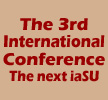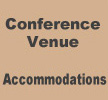About iaSU2012 JAPAN
The International Association of Silk Road Universities (iaSU) is pleased to announce that the 2nd International Conference on Archi-Cultural Translations through the Silk Road will be held on July 14-16, 2012, at Kami-Koshien Campus of Mukogawa Women's University, Nishinomiya, Japan.
About iaSU
The iaSU was established in March, 2011, principally by Bahcesehir University, Turkey, and Mukogawa Women's University, Japan, located respectively on the west and east of the Silk Road. The iaSU's mission is to promote extensive studies on life, technology and culture centered around architecture of countries on the Silk Road, to clarify commonality among them, and thus contribute to renewed mutual understanding and peace and prosperity of the Silk Road region. The iaSU also tries to introduce (or transmit) its achievements worldwide, and share common values with people. Based on this concept, the iaSU will hold, in Japan, the 2nd International Conference on Archi-Cultural translations through the Silk Road.
Globalization/culture
Nowadays, a global tendency to seek a rich life supported by mass production and mass consumption is conspicuous, and a sort of homogenous life style is rapidly spreading under the motto of economic rationality. Similar sights of skyscrapers are ubiquitous. In Tokyo, too, in return for economic development, many of historical and cultural buildings have been demolished with new high-rise buildings flourishing. On the other hand, intolerance toward foreign cultures seems to be getting more radical. We have to realize that "culture" is an important key to save modern society.
Strength/utility/beauty
An ancient Roman architect, Marcus Vitruvius Pollio explained that architecture must possess three qualities: strength, utility and beauty. Strength is structural strength that protects man's life against disasters, and utility is convenience. While, beauty is a requirement before a building is called "architecture". The three qualities are assimilated as layers of three bricks, with the lowest being strength, the middle utility, and the top beauty. While strength and utility correspond to science and technology which seek truth or universal value, beauty is encompassed by "culture", along with arts, history, play, regionality, and so forth, which each has its individuality and cannot be substituted by anything else. And, goodness is an indispensable concept related to religion and value.
Considering culture
In this conference, thorough presentations of interdisciplinary research and interchanges, we would like to discuss "culture" intensively with various participants including researchers, designers, and engineers in the areas of architecture, urban planning, landscape, art, design, history, sociology, anthropology, psychology and so on.
Japanese teahouse/Japanese garden
In the district where the venue, Mukogawa Women's University, is located, people have lived with nature and they have nurtured rich traditional culture as seen in Kyoto or Nara. We would like you to visit teahouses and Japanese gardens. Teahouses are made of natural materials such as wood and mud. Preferably materials are used in a natural stage, e.g. unpeeled log or bent wood is installed without being processed. Repetition of columns, beams or windows of similar figure or color is not allowed. Materials of various physiognomies unite to create a harmonized appearance. The same applies to Japanese gardens. Placing stones of various physiognomies, gardeners create a harmonized ideal world as a whole as their fancy takes them. This may show how to create a better environment or a harmonized world where cultures of various physiognomies can coexist, or show how to get along with the technology which tends to homogenize the world.
Kyoto 1 Day Tour including Gion-Matsuri Festival
On Monday, July 16, the last day of the conference, we plan an excursion of Kyoto, a city of 1,200 years' history where there are many world heritage sites including temples, shrines and Japanese gardens. Kyo-Machiya (literally, town houses in Kyoto) is also well known. It is composed of clusters of traditional wooden Japanese houses developed in the heavily populated capital of Kyoto. Our plan includes visits to these locations as well as the street where Gion-Matsuri Festival is held. The festival, one of the greatest Japanese festivals, is held by inhabitants of Kyo-Machiya, mainly on 14-17 July, attracting daily 200,000 to 400,000 visitors during the festival. The whole city seems as if it were a stage of a drama: Dashi, or decorated floats, are fabricated on the streets, overnight stalls line up and Ohayashi, or Japanese traditional music, is played. We would like you to enjoy this annual festival, which even a Japanese cannot miss.
Welcome all
This conference will give you a big opportunity to consider "culture", a keyword in the world to come, as well as to experience Japanese exquisite culture. We welcome researchers, designers and engineers, including students, from all over the world and look forward to your entries.


















